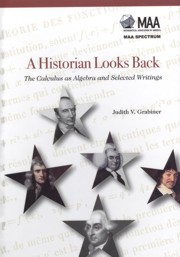Book contents
- Frontmatter
- Contents
- Introduction
- Part I The Calculus as Algebra
- Preface to the Garland Edition
- Acknowledgements
- Introduction
- 1 The Development of Lagrange's Ideas on the Calculus: 1754–1797
- 2 The Algebraic Background of the Theory of Analytic Functions
- 3 The Contents of the Fonctions Analytiques
- 4 From Proof-Technique to Definition: The Pre-History of Delta-Epsilon Methods
- Conclusion
- Appendix
- Bibliography
- Part II Selected Writings
- Index
- About the Author
4 - From Proof-Technique to Definition: The Pre-History of Delta-Epsilon Methods
from Part I - The Calculus as Algebra
- Frontmatter
- Contents
- Introduction
- Part I The Calculus as Algebra
- Preface to the Garland Edition
- Acknowledgements
- Introduction
- 1 The Development of Lagrange's Ideas on the Calculus: 1754–1797
- 2 The Algebraic Background of the Theory of Analytic Functions
- 3 The Contents of the Fonctions Analytiques
- 4 From Proof-Technique to Definition: The Pre-History of Delta-Epsilon Methods
- Conclusion
- Appendix
- Bibliography
- Part II Selected Writings
- Index
- About the Author
Summary
Introduction
The nineteenth century is often called “the Age of Rigor in Analysis.” This name can be understood as “the age of delta and epsilon.” In defining limits, in proving theorems, in exemplifying clear thinking, the rigor known as “Weierstrassian” represents to us the greatest achievement of the nineteenth-century analysts.
The development of these principles from the less adequate foundations for the calculus of the eighteenth century illustrates a trend common to many branches of nineteenth century mathematics, a trend toward increasing generality and abstraction. In the area of the foundations of analysis, this trend can be viewed as a retreating of the frontier of the “obvious.” For instance, Lagrange believed that the principles of the algebra of finite polynomials could be extended to the algebra of infinite series; André-Marie Ampère rejected this, but, like Lagrange, accepted the intermediate-value property as a self-evident attribute of continuous functions; Augustin-Louis Cauchy and Bernhard Bolzano realized that the intermediate-value property had to be proved, but implicitly assumed in their proofs the convergence of bounded monotone sequences. Again, after Richard Dedekind had worked out a rigorous theory of the irrational, while Karl Weierstrass had completed the task of reducing the concepts of the calculus to those of arithmetic, the search for the foundations of arithmetic itself was begun.
The working out of the principles and techniques of delta-epsilon methods lies at the heart of the rigorization of analysis.
- Type
- Chapter
- Information
- A Historian Looks BackThe Calculus as Algebra and Selected Writings, pp. 81 - 100Publisher: Mathematical Association of AmericaPrint publication year: 2010



